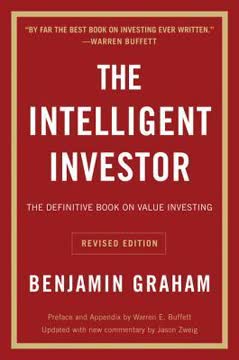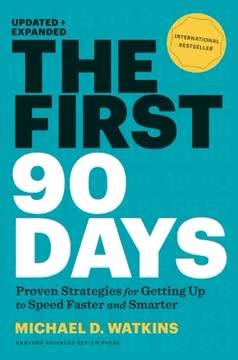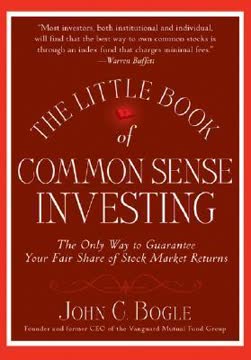Key Takeaways
1. Traditional portfolios need updating: The 60/40 stock/bond mix is outdated
The 60/40 stock and bond portfolio looks like it is standing on two legs, when it's mostly standing on one: stocks.
Rethink risk allocation. The traditional 60/40 portfolio allocates 60% to stocks and 40% to bonds in terms of dollar value. However, this allocation doesn't accurately reflect the risk distribution. Stocks are typically 3-4 times riskier than bonds, meaning that about 85% of the portfolio's risk comes from the stock portion.
Diversification is crucial. This imbalance in risk exposure can lead to significant losses during stock market downturns, as experienced in 2008. To mitigate this risk, investors should consider alternative investments that have low correlations to both stocks and bonds. These can include:
- Commodities
- Real Estate Investment Trusts (REITs)
- Hedge fund strategies
- Managed futures
By incorporating these alternatives, investors can create a more balanced risk profile and potentially improve their risk-adjusted returns over time.
2. Diversification is key: Low correlation assets improve risk-adjusted returns
Low correlation puts the disco in diversification.
Understand correlation. Correlation measures how two investments move in relation to each other. A correlation of +1 means they move in perfect lockstep, while -1 indicates they move in opposite directions. Assets with low or negative correlations to each other can significantly improve portfolio diversification.
Benefits of diversification:
- Reduces overall portfolio risk
- Smooths out returns over time
- Potentially improves risk-adjusted returns
Examples of low correlation assets:
- Commodities relative to stocks and bonds
- REITs relative to stocks
- Managed futures relative to traditional investments
By combining assets with low correlations, investors can potentially achieve similar returns with less risk or higher returns for the same level of risk.
3. Hedge fund strategies can be accessed through mutual funds
Greenwich is moving to Main Street.
Democratization of alternatives. Traditionally, hedge fund strategies were only available to wealthy investors and institutions. However, many of these strategies are now being packaged into mutual funds and exchange-traded funds (ETFs), making them accessible to a broader range of investors.
Benefits of hedge fund strategies in mutual funds:
- Lower investment minimums
- Daily liquidity
- Increased transparency
- SEC regulation
- Simplified tax reporting
Popular hedge fund strategies in mutual funds:
- Long/short equity
- Market neutral
- Global macro
- Managed futures
- Event-driven
While these funds may not replicate hedge fund returns exactly, they can provide similar diversification benefits and return patterns at a lower cost and with greater accessibility.
4. Commodities offer inflation protection and portfolio diversification
If you believe that commodities have almost any real positive expected return, they are going to have a place in your portfolio.
Inflation hedge. Commodities tend to perform well during periods of high inflation, as their prices typically rise along with overall price levels. This makes them an effective hedge against the erosion of purchasing power.
Diversification benefits:
- Low to negative correlation with stocks and bonds
- Can perform well during economic downturns
- Provides exposure to global economic growth
Ways to invest in commodities:
- Commodity index funds (e.g., DBC, DJP)
- Commodity-focused mutual funds
- Exchange-traded notes (ETNs) linked to commodity indexes
A small allocation to commodities (5-10% of portfolio) can potentially improve risk-adjusted returns and provide valuable diversification benefits.
5. Real Estate Investment Trusts (REITs) provide steady income and growth potential
The premise of landlords collecting rent is about as durable a business proposition as can be imagined.
Income and growth. REITs offer investors exposure to commercial real estate without the need to directly own and manage properties. They provide a steady stream of income through rent collection and the potential for capital appreciation as property values increase.
REIT advantages:
- High dividend yields
- Potential for long-term capital appreciation
- Inflation protection through rising rents
- Low correlation with stocks and bonds
Types of REITs:
- Equity REITs (own and operate income-producing properties)
- Mortgage REITs (invest in real estate loans)
Investors can access REITs through individual stocks, mutual funds, or ETFs. A typical allocation might be 5-15% of a diversified portfolio.
6. Long/short equity strategies can enhance returns in various market conditions
Long/short funds are perhaps the most similar to conventional equity funds, in that they rely on individual managers' stock picking and market timing skill.
Flexible approach. Long/short equity funds aim to profit from both rising and falling stock prices. They buy (go long) stocks they believe will appreciate and sell short stocks they expect to decline.
Potential benefits:
- Can generate positive returns in both up and down markets
- Reduced market exposure compared to long-only funds
- Ability to profit from overvalued stocks
Considerations:
- Higher fees compared to traditional mutual funds
- Relies heavily on manager skill
- May underperform in strong bull markets
Long/short equity funds can be a valuable addition to a portfolio, potentially providing smoother returns and downside protection. However, careful manager selection is crucial.
7. Market neutral funds aim for consistent returns regardless of market direction
Market neutral equity funds evenly balance their long and short holdings, leaving you with a portfolio whose entire return has nothing to do with the performance of the stock market and everything to do with the skill of the manager picking stocks.
Seeking absolute returns. Market neutral funds aim to generate positive returns regardless of overall market direction by maintaining equal long and short positions.
Key characteristics:
- Low correlation to stock market
- Potentially lower volatility than long-only funds
- Aims for consistent, modest returns
Strategies employed:
- Pairs trading (long one stock, short a similar stock)
- Statistical arbitrage
- Fundamental analysis to identify mispriced securities
Market neutral funds can be an effective diversifier in a portfolio, potentially reducing overall volatility and providing returns uncorrelated with traditional assets.
8. Global macro strategies offer flexibility across asset classes and geographies
Global macro managers take a 35,000-foot view of the world economy at a macro level and place their bets where they perceive imbalances, relative misvaluations, or other opportunities.
Broad investment universe. Global macro funds have the flexibility to invest across various asset classes and geographies based on macroeconomic trends and market inefficiencies.
Potential advantages:
- Ability to profit from global economic trends
- Flexibility to go long or short in multiple markets
- Can provide diversification benefits
Common strategies:
- Currency trades
- Interest rate bets
- Commodity positions
- Equity index futures
Global macro strategies can offer valuable diversification and return potential, but they often rely heavily on manager skill and may have higher fees than traditional investments.
9. Managed futures can provide strong returns during market turmoil
Managed futures have been up more than 10 percent during each of the five worst quarters for the stock market since 1985.
Crisis alpha. Managed futures funds, also known as trend-following strategies, have historically performed well during periods of market stress, providing valuable portfolio protection.
Key characteristics:
- Ability to go long or short in various futures markets
- Low correlation to traditional assets
- Potential for strong returns in both up and down markets
Markets traded:
- Commodities
- Currencies
- Interest rates
- Stock indexes
Managed futures can be an effective diversifier and potential hedge against market downturns, but they may experience periods of underperformance during trendless markets.
10. Alternative strategies require careful consideration and understanding
Don't invest beyond your headlights.
Due diligence is crucial. Alternative investments can be complex and may involve risks that are not present in traditional investments. It's essential to thoroughly understand any alternative strategy before investing.
Key considerations:
- Strategy complexity and transparency
- Historical performance and risk characteristics
- Manager track record and experience
- Fees and expenses
- Liquidity terms
Implementation options:
- Mutual funds and ETFs offering alternative strategies
- Fund-of-funds products
- Direct investment in hedge funds (for qualified investors)
Start with a small allocation to alternatives and gradually increase exposure as you become more comfortable with their characteristics and performance patterns. Remember that alternatives are meant to complement, not replace, a core portfolio of stocks and bonds.
Last updated:
FAQ
What’s "The Little Book of Alternative Investments" by Ben Stein and Phil DeMuth about?
- Overview of Alternatives: The book introduces readers to alternative investments—assets and strategies beyond traditional stocks and bonds, such as commodities, real estate, hedge funds, and more.
- Accessible Guide: It aims to demystify complex investment vehicles and strategies, making them understandable for individual investors who may not have advanced financial backgrounds.
- Portfolio Diversification Focus: Stein and DeMuth emphasize the importance of diversifying portfolios with low-correlation assets to reduce risk and improve returns.
- Critical Evaluation: The authors critically assess which alternative investments are worthwhile and which are best avoided, providing practical recommendations.
Why should I read "The Little Book of Alternative Investments" by Ben Stein and Phil DeMuth?
- Expand Investment Knowledge: The book helps readers understand a wide range of investment options beyond the standard 60/40 stock-bond portfolio.
- Practical, Actionable Advice: It offers clear, actionable steps for incorporating alternatives into your portfolio, including specific fund recommendations.
- Humorous and Approachable Style: Stein and DeMuth use wit and relatable analogies to make complex topics engaging and less intimidating.
- Skeptical, Data-Driven Approach: The authors don’t blindly promote alternatives; they analyze the pros and cons, helping readers avoid common pitfalls.
What are the key takeaways from "The Little Book of Alternative Investments"?
- Diversification is Essential: True diversification comes from adding low-correlation assets, not just more stocks or bonds.
- Not All Alternatives Are Equal: Some alternatives (like collectibles or private equity) are best avoided by most investors, while others (like REITs and commodities) can add real value.
- Risk and Return Must Be Balanced: Understanding the risk profile of each asset class is crucial; many portfolios are more exposed to equity risk than investors realize.
- Hedge Fund Strategies for All: Many hedge fund strategies are now accessible through mutual funds and ETFs, allowing ordinary investors to benefit from them.
How do Ben Stein and Phil DeMuth define "alternative investments" in this book?
- Beyond Stocks and Bonds: Alternatives are defined as investments outside the traditional categories of stocks, bonds, and standard real estate.
- Includes Both Assets and Strategies: The term covers both different asset types (commodities, REITs, collectibles) and alternative trading methods (hedging, shorting, arbitrage).
- Low Correlation is Key: The main criterion is that these investments should have returns that are not closely tied to the stock or bond markets.
- Purpose is Risk Reduction: Alternatives are valuable primarily for their ability to reduce overall portfolio risk through diversification.
What is the main investment philosophy or method advocated in "The Little Book of Alternative Investments"?
- Risk-Based Asset Allocation: The authors recommend classifying investments by their risk contribution, not just by dollar amount, to reveal true portfolio exposure.
- Emphasis on Low-Correlation Assets: They advocate seeking out assets and strategies with low or negative correlation to stocks and bonds.
- Passive Over Active: For most investors, passive index funds and systematic strategies outperform active management, especially after fees.
- Incremental Adoption: Investors should start with small allocations to alternatives, increasing exposure as understanding and comfort grow.
Which alternative investments do Stein and DeMuth recommend, and which do they advise against?
- Recommended Alternatives: The authors favor commodities (via index funds), REITs, and certain hedge fund strategies (like managed futures, event-driven, and market neutral).
- Cautious on Hedge Funds: While hedge fund strategies can add value, they recommend accessing them through mutual funds or ETFs rather than traditional hedge funds due to high fees and lack of transparency.
- Alternatives to Avoid: They advise against collectibles, private equity, structured products, and dedicated short bias funds for most investors.
- Gold and Buy/Write Funds: Gold is only recommended as a small part of a diversified commodity index, and buy/write funds are seen as unnecessary.
How do Ben Stein and Phil DeMuth explain the importance of correlation and diversification in portfolio construction?
- Correlation Defined: Correlation measures how two assets move in relation to each other; low or negative correlation means assets don’t move together.
- Diversification Benefits: Combining low-correlated assets reduces overall portfolio risk without necessarily sacrificing returns.
- 2008 Crisis Lesson: The authors argue that the 2008 financial crisis showed a failure to diversify enough, not a failure of diversification itself.
- Risk Reduction is Free Lunch: Proper diversification allows investors to achieve the same returns with less risk, which is the "free lunch" of investing.
What are the main types of hedge fund strategies covered in "The Little Book of Alternative Investments"?
- Long/Short Equity: Buying undervalued stocks and shorting overvalued ones to profit from both rising and falling prices.
- Market Neutral: Balancing long and short positions to eliminate market risk, focusing on manager skill.
- Event-Driven: Profiting from corporate events like mergers, acquisitions, or bankruptcies.
- Global Macro and Managed Futures: Making bets based on macroeconomic trends or following price trends in futures markets.
- Other Strategies: Includes convertible arbitrage, fixed-income arbitrage, dedicated short bias, emerging markets, and multi-strategy funds.
How can ordinary investors access alternative investments and hedge fund strategies, according to the book?
- Mutual Funds and ETFs: Many alternative strategies are now available in mutual fund or ETF formats, offering lower fees, transparency, and liquidity.
- Hedge Fund Replicants: Some funds use mathematical models to replicate hedge fund index returns using traditional assets.
- Multi-Strategy Funds: Investors can use funds that combine several hedge fund strategies for broader diversification.
- Start Small: The authors recommend starting with small allocations to alternatives, using well-established, low-cost funds.
What are the risks and drawbacks of alternative investments highlighted by Stein and DeMuth?
- Complexity and Understanding: Many alternatives are complex and may be misunderstood by retail investors.
- High Fees and Illiquidity: Traditional hedge funds often have high fees, lack transparency, and restrict withdrawals.
- Manager Risk: Active strategies depend on manager skill, which is hard to identify in advance and may not persist.
- Crowding and Diminishing Returns: As more money flows into certain strategies, their effectiveness and returns may decrease.
What is the recommended process for adding alternative investments to a portfolio, according to "The Little Book of Alternative Investments"?
- Assess Core Portfolio First: Ensure your traditional stock and bond portfolio is optimized and diversified globally.
- Add Conventional Alternatives: Start by allocating a small percentage (e.g., 3% each) to commodities and REITs.
- Introduce Hedge Fund Strategies: Gradually add 6–20% to hedge fund strategies using mutual funds or ETFs, spreading allocations across different strategies.
- Monitor and Adjust: Regularly review performance and correlations, and increase allocations only as your understanding and comfort with alternatives grow.
What are the best quotes from "The Little Book of Alternative Investments" and what do they mean?
- "Low correlation puts the disco in diversification." – Highlights the importance of combining assets that don’t move together to reduce risk.
- "Luck is a terrible strategy." – Emphasizes the need for a disciplined, evidence-based approach rather than relying on chance.
- "Being right and early is simply another way of being wrong." – Warns that timing is crucial in investing; even correct predictions can lead to losses if mistimed.
- "Don’t invest beyond your headlights." – Advises readers not to invest in products or strategies they don’t fully understand.
- "The relentless Hegelian dialectic of investing history: The lawn mower of progress chews up alpha and spits out beta." – Explains how once-exceptional strategies become mainstream and lose their edge as more investors adopt them.
Review Summary
The Little Book of Alternative Investments receives mixed reviews. Many readers appreciate its accessible approach to complex financial topics, praising the authors' engaging writing style and use of humor. The book is commended for its introduction to alternative investments and portfolio diversification strategies. However, some critics find the content superficial, lacking in-depth analysis, and overly focused on hedge funds. While some readers highly recommend it for novice investors, others argue it doesn't provide enough detailed information to fully understand alternative investments.
Similar Books










Download PDF
Download EPUB
.epub digital book format is ideal for reading ebooks on phones, tablets, and e-readers.




